
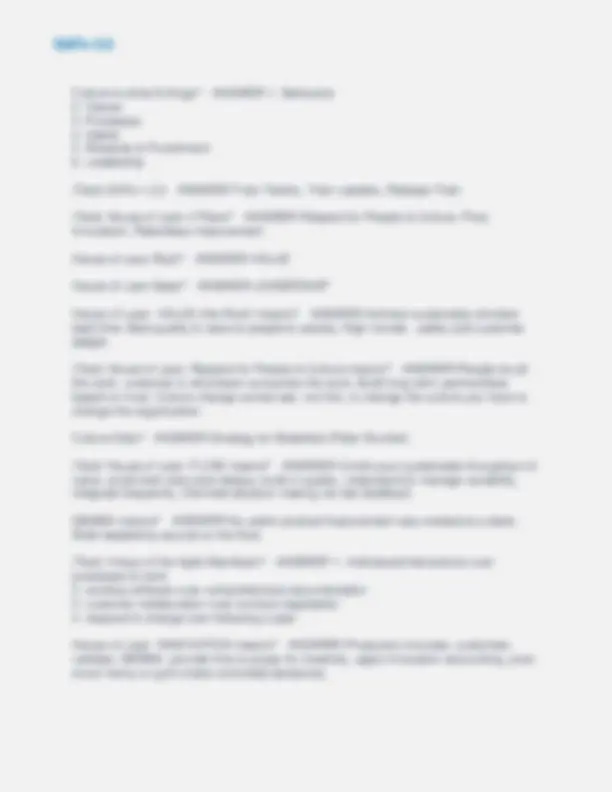
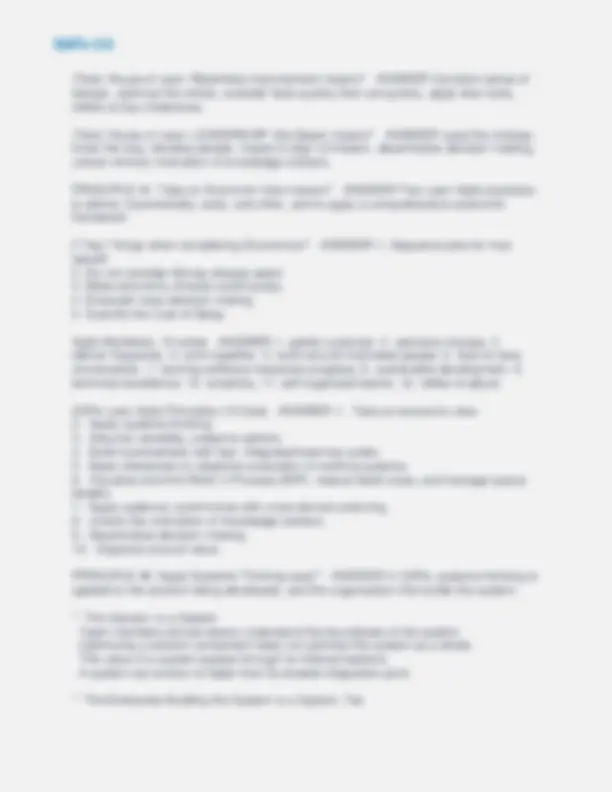
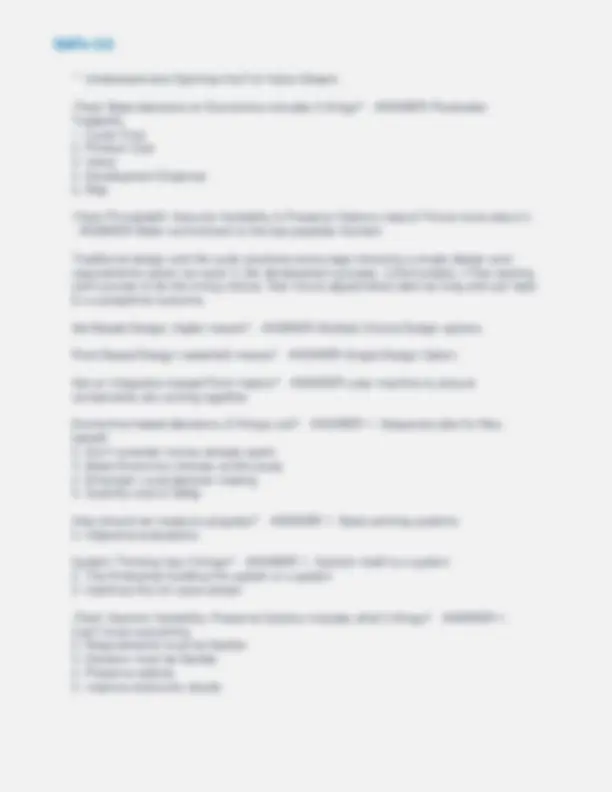
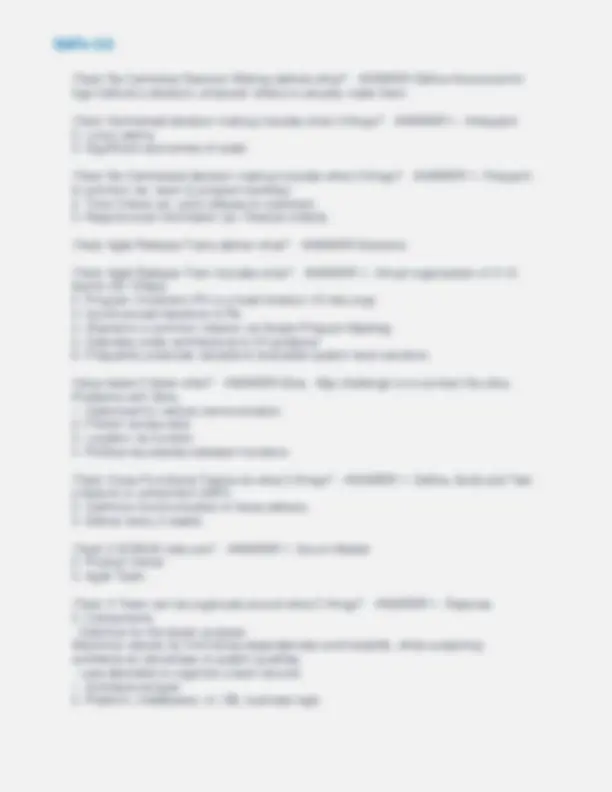
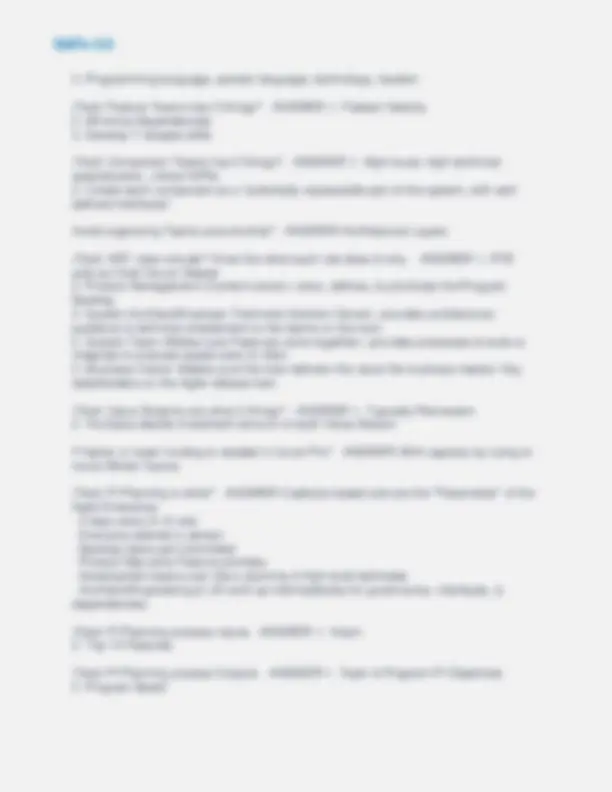
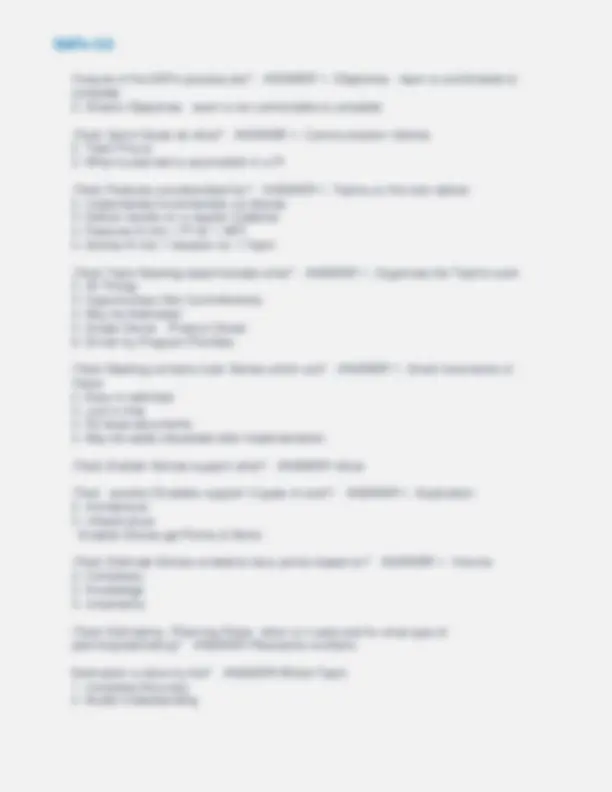
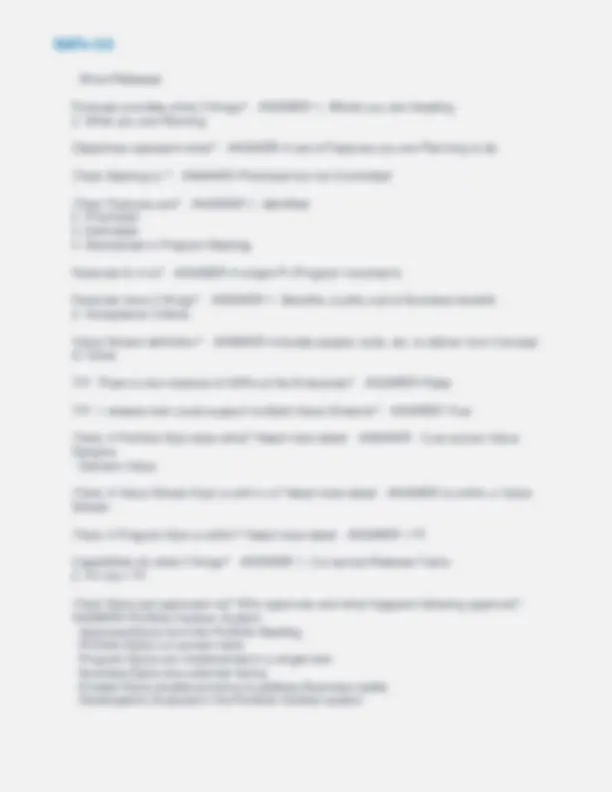
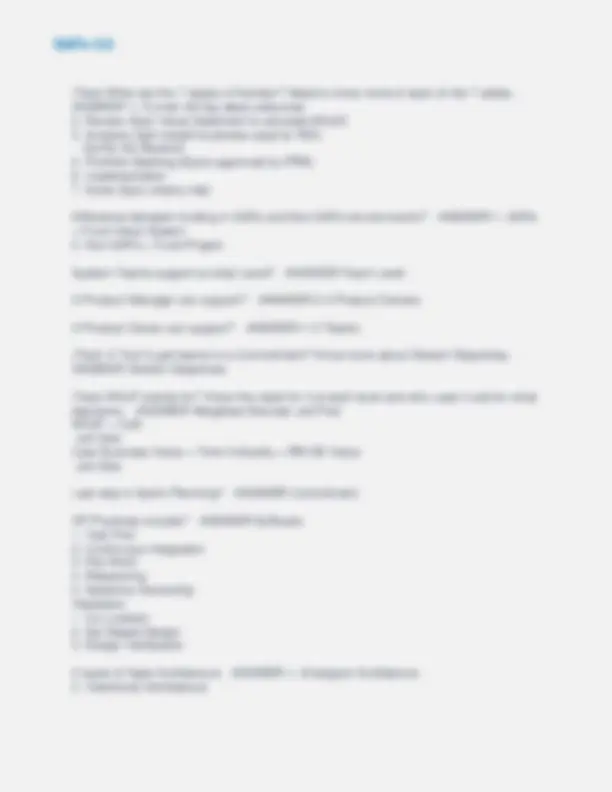
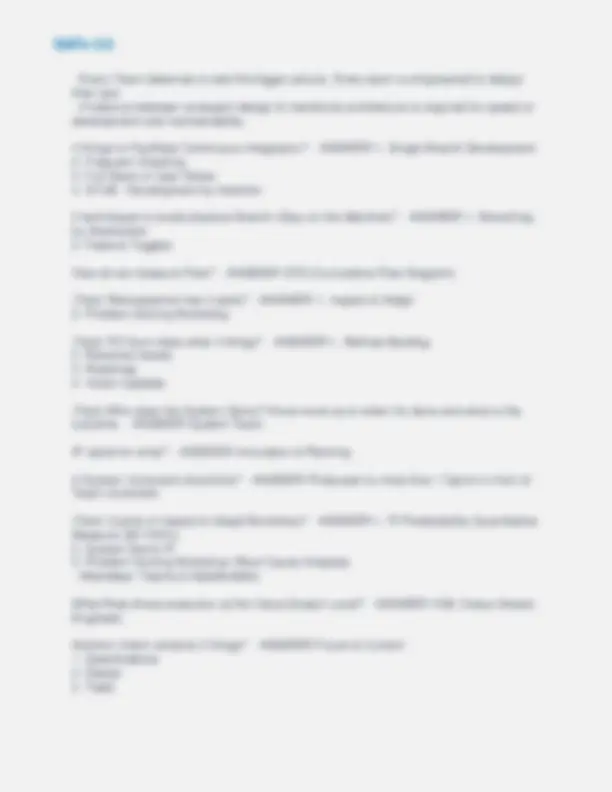
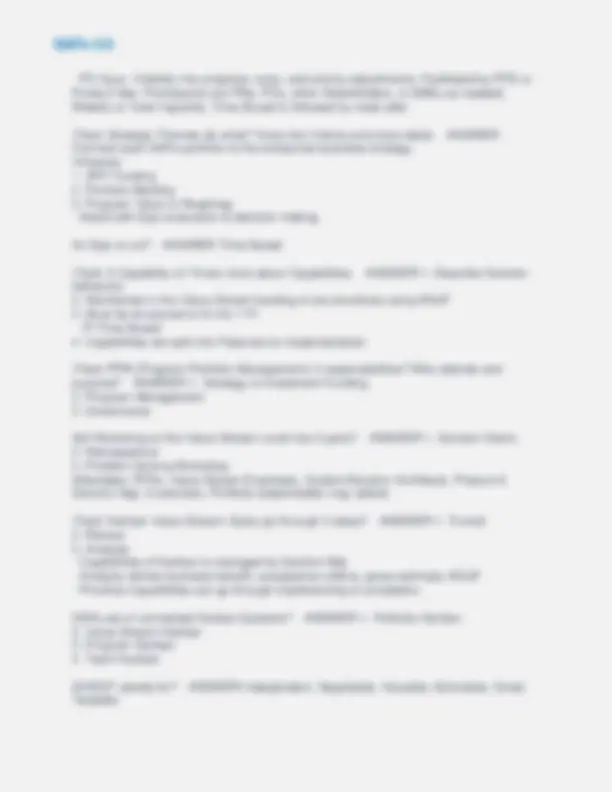
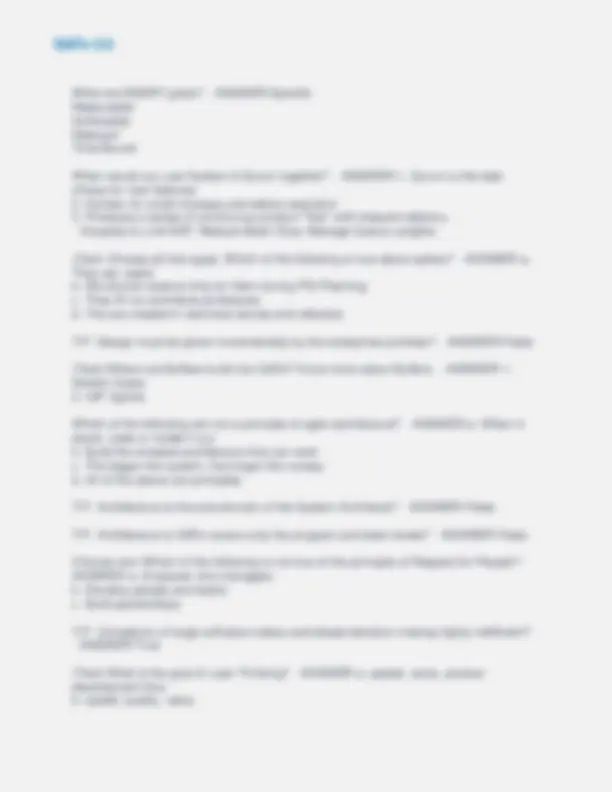
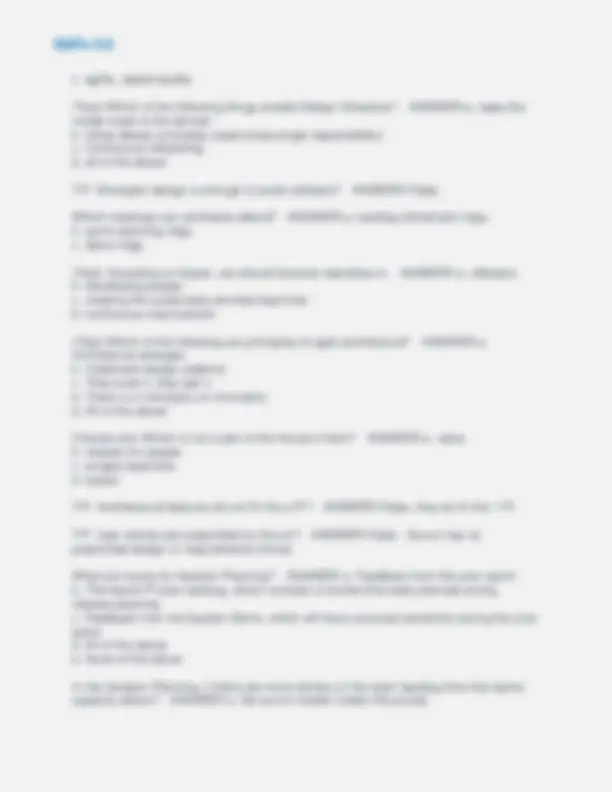
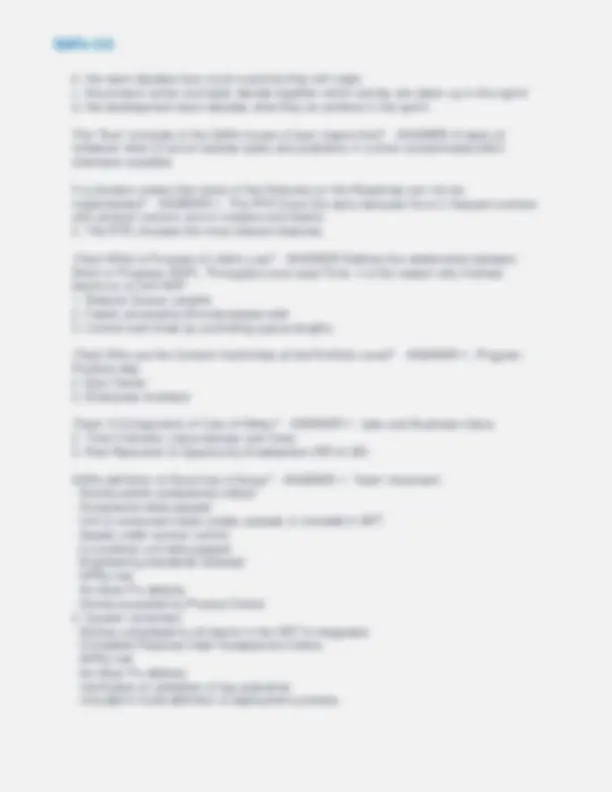
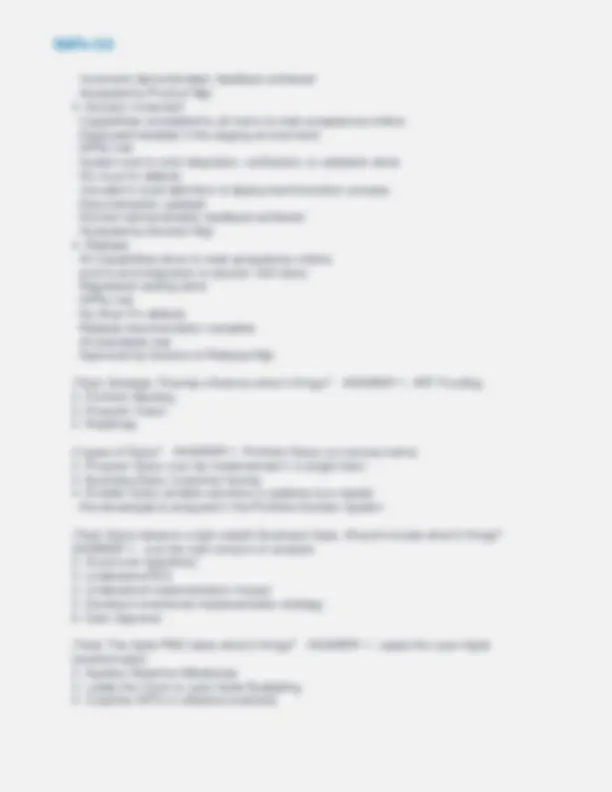
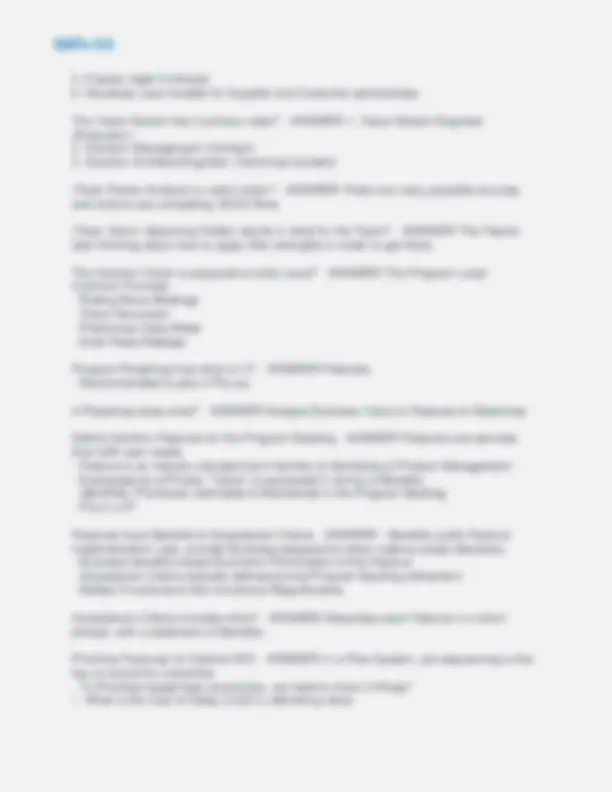
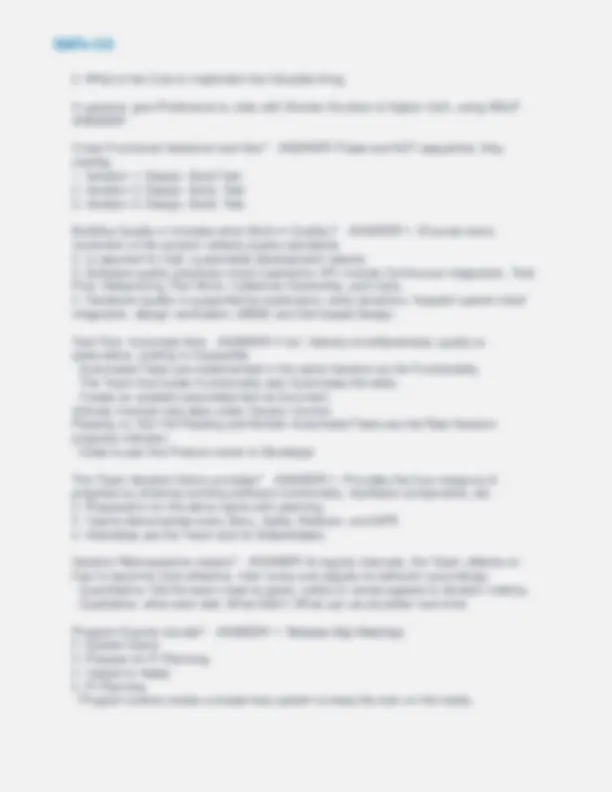
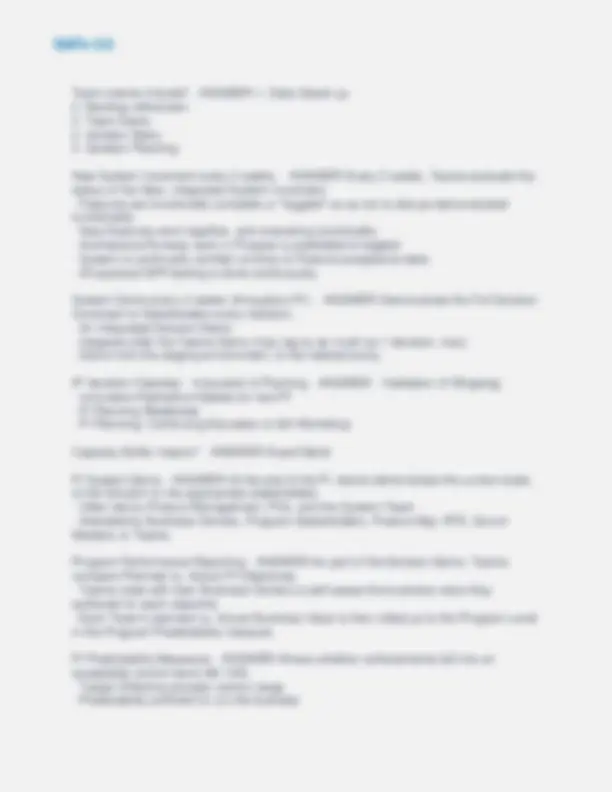
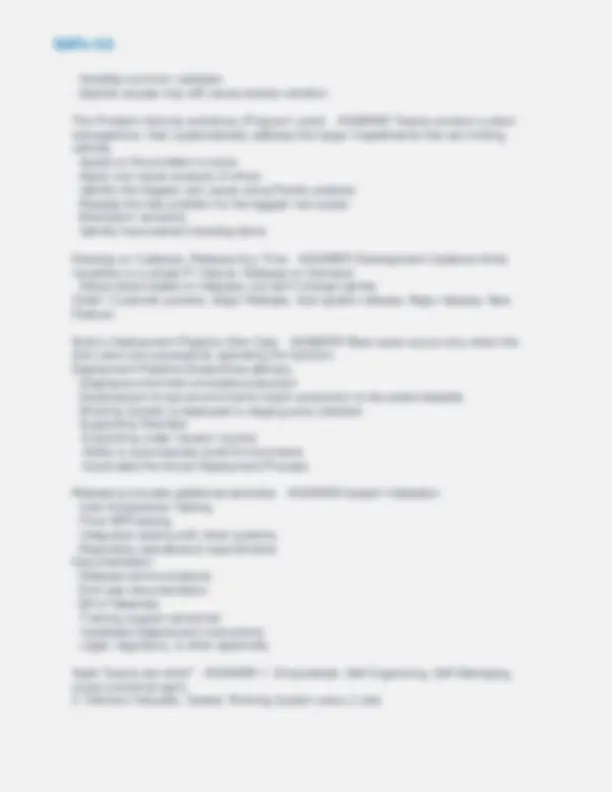
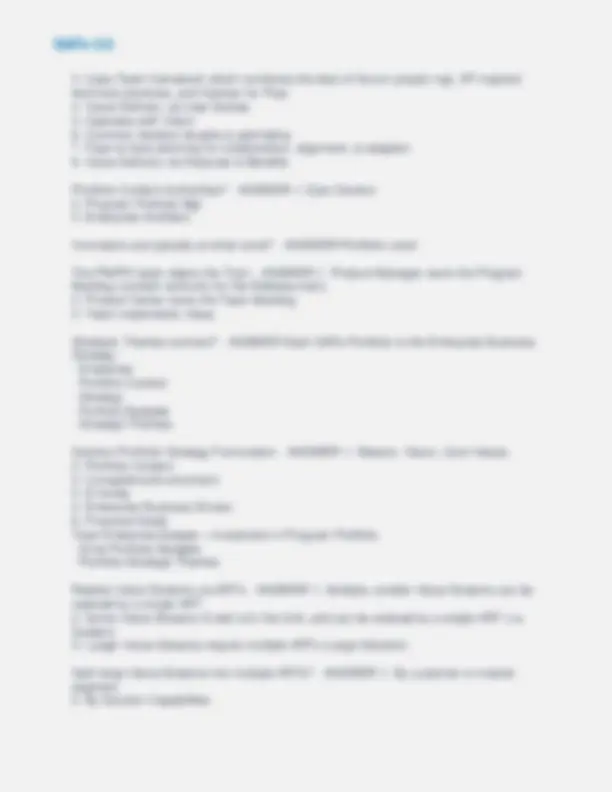
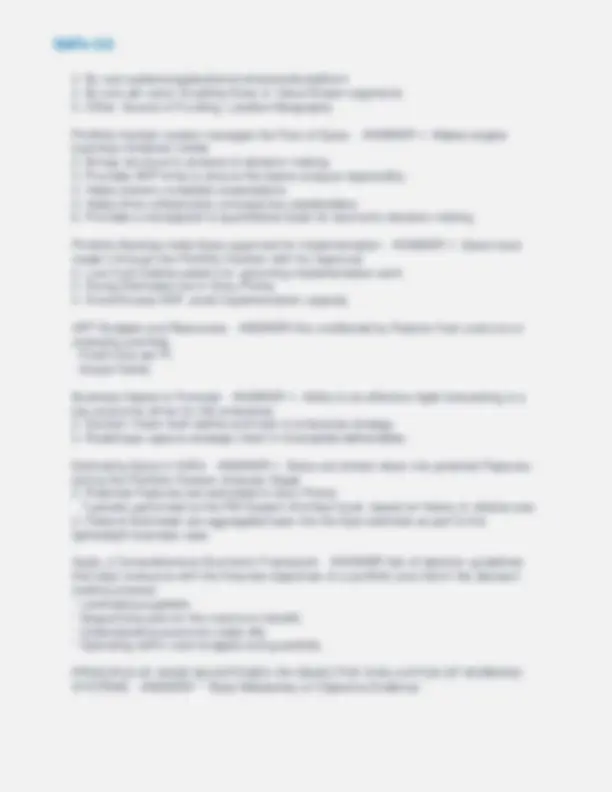

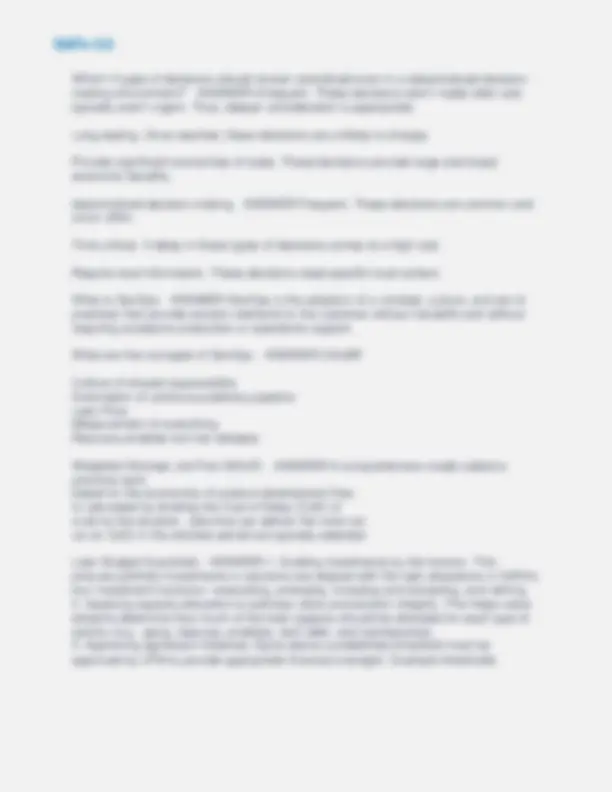


Study with the several resources on Docsity

Earn points by helping other students or get them with a premium plan


Prepare for your exams
Study with the several resources on Docsity

Earn points to download
Earn points by helping other students or get them with a premium plan
Community
Ask the community for help and clear up your study doubts
Discover the best universities in your country according to Docsity users
Free resources
Download our free guides on studying techniques, anxiety management strategies, and thesis advice from Docsity tutors
SAFe stands for? - ANSWER-Scaled Agile Framework enterprise HIP stands for? - ANSWER-Hardening, Innovation, Planning (Test) What drives the upper limit to 125? - ANSWER-Dunbar's Number: Maintain stable social relationships (Test) Why do we want to organize around Value? - ANSWER-Fewer handoffs, drive alignment, easier to build in quality, optimize the whole system Operational Value Stream is? - ANSWER-Used to deliver end customer value (Test) Development Value Stream means? - ANSWER-Development of Systems & Capabilities that enable the operational value streams (Test) Where do we start to ID Multiple Value Streams? - ANSWER-4 Dimensions? Significant Opportunity, Clear products/solutions, Leadership support, Collaborating Teams. (Test) 3 things to Motivate? - ANSWER-1. Autonomy
Typology: Exams
1 / 30

This page cannot be seen from the preview
Don't miss anything!























SAFe stands for? - ANSWER-Scaled Agile Framework enterprise HIP stands for? - ANSWER-Hardening, Innovation, Planning (Test) What drives the upper limit to 125? - ANSWER-Dunbar's Number: Maintain stable social relationships (Test) Why do we want to organize around Value? - ANSWER-Fewer handoffs, drive alignment, easier to build in quality, optimize the whole system Operational Value Stream is? - ANSWER-Used to deliver end customer value (Test) Development Value Stream means? - ANSWER-Development of Systems & Capabilities that enable the operational value streams (Test) Where do we start to ID Multiple Value Streams? - ANSWER-4 Dimensions? Significant Opportunity, Clear products/solutions, Leadership support, Collaborating Teams. (Test) 3 things to Motivate? - ANSWER-1. Autonomy
Value Stream is a? - ANSWER-Fundamental thinking construct in Lean (Test) Scrum includes a? - ANSWER-Cross-Functional Team of 5 - 9 people Scrum Master (ATF) does what 3 things? - ANSWER-Facilitate Issues, Risks, & Dependencies (Test) Product Owner does what 2 things? - ANSWER-Prioritize Backlog & Accepts Work (Test) 4 Core Values of SAFe - ANSWER-1. Built In Quality
(Test) House of Lean: Relentless Improvement means? - ANSWER-Constant sense of danger, optimize the whole, consider facts quickly then act quickly, apply lean tools, reflect at key milestones. (Test) House of Lean: LEADERSHIP (the Base) means? - ANSWER-Lead the change, know the way, develop people, inspire & align w/mission, decentralize decision making, unlock intrinsic motivation of knowledge workers. PRINCIPLE #1: Take an Economic View means? - ANSWER-Two Lean-Agile practices: to deliver incrementally, early, and often, and to apply a comprehensive economic framework 5 "key" things when considering Economics? - ANSWER-1. Sequence jobs for max benefit
** Understand and Optimize the Full Value Stream (Test) Base decisions on Economics includes 5 things? - ANSWER-Parameter Tradeoffs:
(Test) De-Centralize Decision Making defines what? - ANSWER-Define the economic logic behind a decision; empower others to actually make them (Test) Centralized decision making includes what 3 things? - ANSWER-1. Infrequent
Outputs of the SAFe process are? - ANSWER-1. Objectives - team is comfortable to complete
(Test) What are the 7 states of Kanban? Need to know more of each of the 7 states. - ANSWER-1. Funnel (All big ideas welcome)
(Test) The Solution is Built at what SAFe Level? - ANSWER-Value Stream Level
MVP - ANSWER-Minimum Viable Product Plan & Commit has 4 steps? - ANSWER-1. Purpose (Define & commit what will be built in the iteration
What are SMART goals? - ANSWER-Specific Measurable Achievable Relevant Time Bound When would you use Kanban & Scrum together? - ANSWER-1. Scrum is the best choice for new features
c. agility, speed quality (Test) Which of the following things enable Design Simplicity? - ANSWER-a. keep the model close to the domain b. follow design principles (open/close single responsibility) c. Continuous refactoring d. all of the above T/F: Emergent design is enough to scale software? - ANSWER-False Which meetings can architects attend? - ANSWER-a. backlog refinement mtgs b. sprint planning mtgs c. demo mtgs (Test) According to Kaizen, we should become relentless in: - ANSWER-a. reflection b. developing people c. creating the sustainably shortest lead time d. continuous improvement (Test) Which of the following are principles of agile architecture? - ANSWER-a. Architecture emerges b. Implement design patterns c. They build it, they test it d. There is a monopoly on innovation d. All of the above Choose one: Which is not a part of the house of lean? - ANSWER-a. value b. respect for people c. longest lead time d. kaizen T/F: Architectural features do not fit into a PI? - ANSWER-False, they do fit into 1 PI T/F: User stories are prescribed by Scrum? - ANSWER-False - Scrum has no prescribed design or requirements format. What are inputs for Iteration Planning? - ANSWER-a. Feedback from the prior sprint b. The teams PI plan backlog, which consists of stories that were planned during release planning c. Feedback from the System Demo, which will have occurred sometime during the prior sprint d. All of the above e. None of the above In the Iteration Planning, if there are more stories on the team backlog than the teams capacity allows? - ANSWER-a. the scrum master orders the pizzas